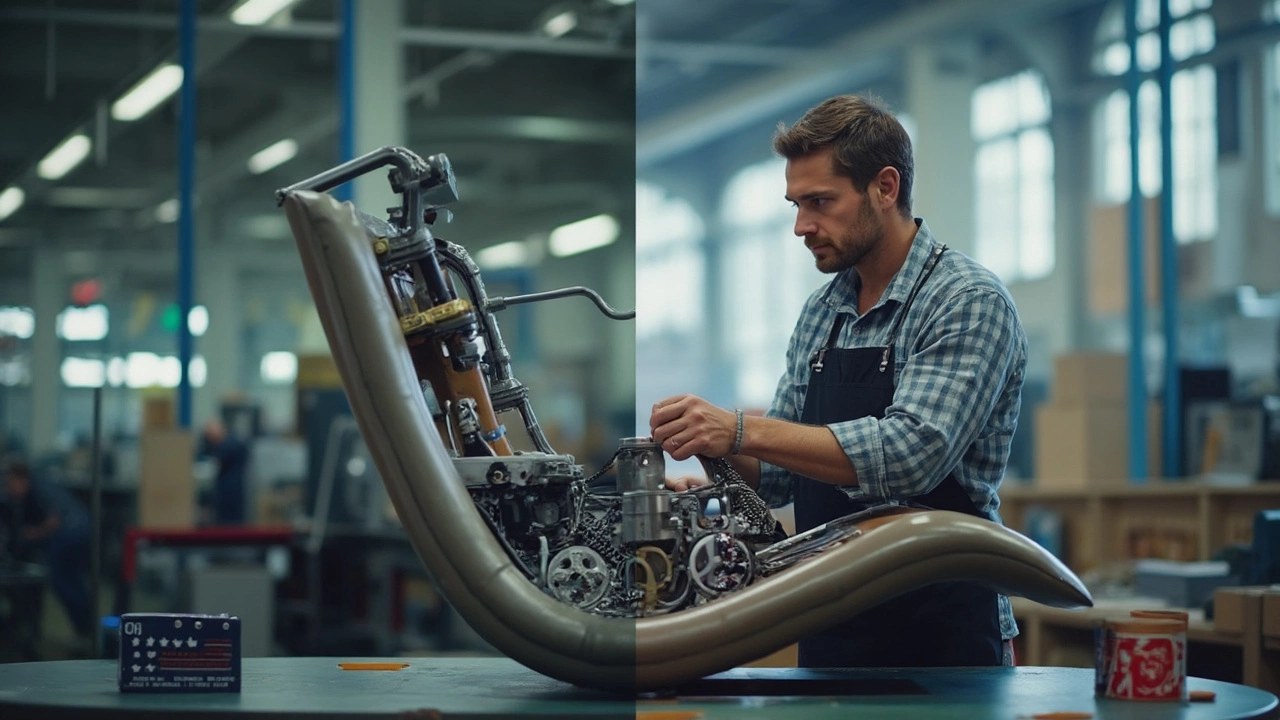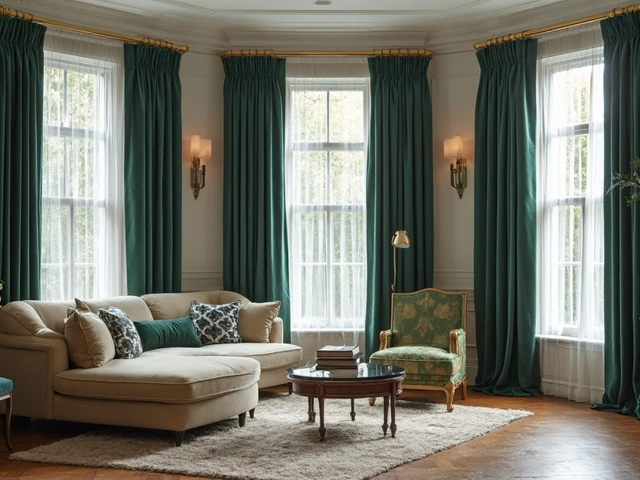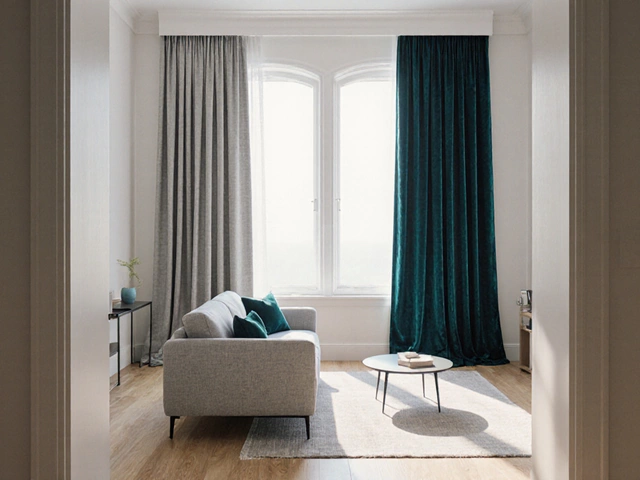Most people just assume any big furniture brand has gone overseas. But does that ring true for Lazyboy? If you're hunting for a sofa or recliner, it actually makes a big difference to know where your couch is built. It’s not just about bragging rights—it can affect quality, repair options, and even how long your new seat lasts.
So here’s the bottom line: not all Lazyboy furniture is made in China. In fact, much of their core line—think of the classic recliners and sofas—still rolls out of the U.S. That said, some parts and specialty items do come from factories worldwide, including China. It's a bit of a mix, kind of like how your phone is "designed in California" but assembled somewhere else.
- The Origins of Lazyboy Sofas
- Where Lazyboy Really Manufactures Its Products
- Why Manufacturing Location Matters
- How to Spot the Real Deal
- Buying Tips for Lazyboy Sofas
The Origins of Lazyboy Sofas
Lazyboy isn’t just a random name in the furniture store—it actually started as an American success story. The company kicked off in 1927 in Monroe, Michigan. Two cousins, Edward Knabusch and Edwin Shoemaker, built what they called the first reclining wood-slat chair. It didn’t even have cushions at first, but people loved that they could kick back just by pushing back on the frame.
Through the years, the brand kept pushing, bringing out fully upholstered recliners in the 1930s and trademarking the name “La-Z-Boy.” From there, they became huge in the living room scene. By the 1960s and 70s, Lazyboy wasn’t just about recliners anymore; they added sofas, loveseats, sectionals, and even sleeper sofas.
What set Lazyboy apart early on was that they focused on comfort, adjustability, and durability. Even as other brands started slapping together cheaper furniture, Lazyboy stuck with the whole “built to last” promise. If you spot an old Lazyboy in a friend’s basement, chances are it still kicks back after decades of use.
Fast forward to today, and the Lazyboy name is almost a shortcut for “recliner” in the U.S. The brand is known for staying rooted in Michigan with its headquarters, and for a long time, their factories were spread across several U.S. states. The history’s pretty clear—Lazyboy grew from a tiny garage experiment into one of the most recognized sofa brands in America.
Where Lazyboy Really Manufactures Its Products
If you’re picturing rows of sofas rolling out of a huge Chinese factory with a Lazyboy logo, that’s not exactly how it goes. Lazyboy has kept a big chunk of its manufacturing in the United States. The company’s main U.S. plants are in places like Dayton, Tennessee; Siloam Springs, Arkansas; and Neosho, Missouri. These plants handle the bulk of the **Lazyboy** recliners and sofas sold in America.
Now, Lazyboy isn’t stuck in the 1950s. Like most big brands, they use a global supply chain. That means some parts—like certain leathers, fabrics, and mechanical components—may be sourced from outside the U.S., including China, Vietnam, and Mexico. Still, most final assembly for their main furniture lines happens stateside. Here’s a snapshot of how things break down:
| Product/Component | Main Manufacturing Location |
|---|---|
| Recliner chairs | USA (Tennessee, Arkansas, Missouri) |
| Sofas & Loveseats | USA (same as above) |
| Specialty chairs, Ottomans | Imported (including China, Mexico, Vietnam) |
| Leather & fabrics | Global (often China, Italy, India) |
| Mechanical parts (motors, levers) | Imported (China, Mexico, others) |
The company has said publicly (even in its 2024 annual report) that about 90% of its recliners and motion sofas for the U.S. market are still assembled in America. Some pieces, especially accent or specialty chairs, are imported already built. If you see a tag saying "Made in the USA with domestic and imported parts," that’s the standard for most big-name furniture these days.
When checking a specific sofa or recliner, just flip it over—there’s usually a label showing where it was put together. This trick works in-store or even if you’re visiting someone’s house and feeling nosy. For online buyers, the product listing or official website often points out if it’s USA-made or imported.

Why Manufacturing Location Matters
Where your sofa is built isn’t just a random detail. It can have a huge impact on what you actually get for your money. Let’s break down why the place of production, like whether it’s a US factory or a plant in China, is a big deal for any couch—especially if you’re looking at a Lazyboy.
First up, quality. A lot of Lazyboy’s core sofas and recliners come from American factories in Tennessee, Ohio, and Missouri. These sites are known for sticking to strict quality checks—every button, stitch, and lever gets a real human lookover. There’s just a different level of accountability when stuff is built close to home and labeled “Made in USA.”
But here’s the thing: some parts and specialty furniture do come from overseas, including China and Mexico. Sofas or components made overseas might not always match US quality standards. That can mean more visible glue, less sturdy frames, or even color differences in the fabric.
Another point? Warranty and repairs. Lazyboy offers lifetime warranties on some frames and mechanisms—but only if you buy models made in the US. Imported products often come with a shorter warranty or sometimes none at all. If something breaks, you might end up waiting for replacement parts that have to travel halfway around the globe.
Price is the one area where overseas manufacturing wins. Sofas or recliners partly made in China usually cost less at checkout. But sometimes you end up paying more in the long run for repairs, shipping, or just having to replace the thing early.
| Factor | US-Made Lazyboy | Chinese/Imported Lazyboy |
|---|---|---|
| Quality Control | Very strict; hands-on checks | Varies; less hands-on |
| Warranty | Usually lifetime | Can be limited or none |
| Average Lead Time | 2-6 weeks | 8-12 weeks or longer |
| Price | Higher upfront | Lower upfront |
| Replacement Parts | Easier and faster | Can take longer; less available |
So when you’re choosing a Lazyboy, don’t just look at the price tag. Factor in where it’s made—the answers are usually printed right on the label or in the product listing. If you want long-lasting comfort and solid support, the manufacturing spot actually matters a lot more than you think.
How to Spot the Real Deal
If you don't want to get burned buying a fake or lower-quality version of a Lazyboy sofa, you need to know what to look for. Spotting an authentic Lazyboy isn’t rocket science, but there are some solid things to check before you spend your money.
- Lazyboy Markings: Look for the official Lazyboy tag or label, usually stitched under the seat or along the lower frame. It should have the Lazyboy logo, sometimes with a serial or model number. If you can’t find a tag, that’s already a red flag.
- Origin Label: Real Lazyboy products almost always include a label that says “Made in USA,” “Assembled in USA with Foreign Components,” or clearly states the country of manufacture. Many U.S.-made pieces have an actual city and state listed, like “Monroe, MI.” If it’s missing or just says “Imported,” be careful.
- Recline Mechanism: This part is unique to Lazyboy. Try out the recline feature in the store. A real Lazyboy should glide smoothly and click into different positions without a struggle. Cheaper knock-offs usually feel awkward, jerky, or cheap.
- Warranty Papers: Lazyboy gives a real warranty card or booklet that lays out what’s covered and for how long. Always ask for this. Scammers or unofficial dealers often skip this step, or the papers will feel generic.
- Dealer Check: Make sure you’re buying from an authorized retailer. You can double-check on the official Lazyboy website by entering the store’s name or zip code in their store locator. This step saves headaches later if you need repairs or support.
When in doubt, snap a picture of the tag and look up the model or serial number on Lazyboy’s website or call their customer service. A few minutes of checking can save you from winding up with a disappointing copy instead of the real thing.

Buying Tips for Lazyboy Sofas
Picking out a Lazyboy sofa can feel like a maze, especially if you're trying to figure out where it actually comes from. Knowing what to look for helps you dodge disappointment and makes sure you get what you paid for.
First, check the manufacturing label. Lazyboy puts tags on their sofas and recliners showing exactly where each piece was made. Most of their classic recliners, loveseats, and sectionals are built in the U.S. (like in Tennessee, Michigan, and Missouri), but a few accent pieces or specialty items could be imported. If that label’s missing or looks funny, walk away. It could be a red flag for a knock-off.
Want to get the best value? Here are some must-do tips before buying:
- Test it out in person. Don’t just trust photos online. Go to a showroom, sit down, recline, and check the frame for sturdiness. Run your hands over the fabric or leather—if it feels flimsy or cheap, it probably is.
- Ask about the warranty right there in the store. Most genuine Lazyboy sofas come with a limited lifetime warranty on their mechanisms and frames, plus one year (minimum) on padding and fabrics. Imported models sometimes don’t have the same coverage.
- Don’t skip the serial number. Genuine Lazyboy pieces have one under the seat. Take a photo of it. If you ever need repairs or want to see exactly where it was made, that number will help you track it down—and it can help verify authenticity if you buy used.
- If country of origin matters to you, tell the salesperson you only want a model made in the U.S. Some dealers will try to push imported options unless you ask.
- Always compare store prices to Lazyboy's own website or major retailers. If a "Lazyboy" is way cheaper than usual, it’s almost always a sign it’s fake or not the real deal.
Let’s talk numbers. This table shows current Lazyboy sofa price ranges and warranty differences based on origin:
| Origin | Typical Price (USD) | Warranty Details |
|---|---|---|
| USA (main line) | $900 - $2500 | Limited lifetime on frame/mechanism; 1-3 years on fabrics |
| Imported (China/Mexico/other) | $600 - $1300 | Usually 1 year; some parts may not be covered |
Remember, it’s safest to buy from official brand stores, trusted dealers, or big-name sites like Wayfair. If you see a supposed Lazyboy sofa on a sketchy website for half the usual price, close that tab—quick. Knowing these tricks makes all the difference when hunting for the real Lazyboy experience.







